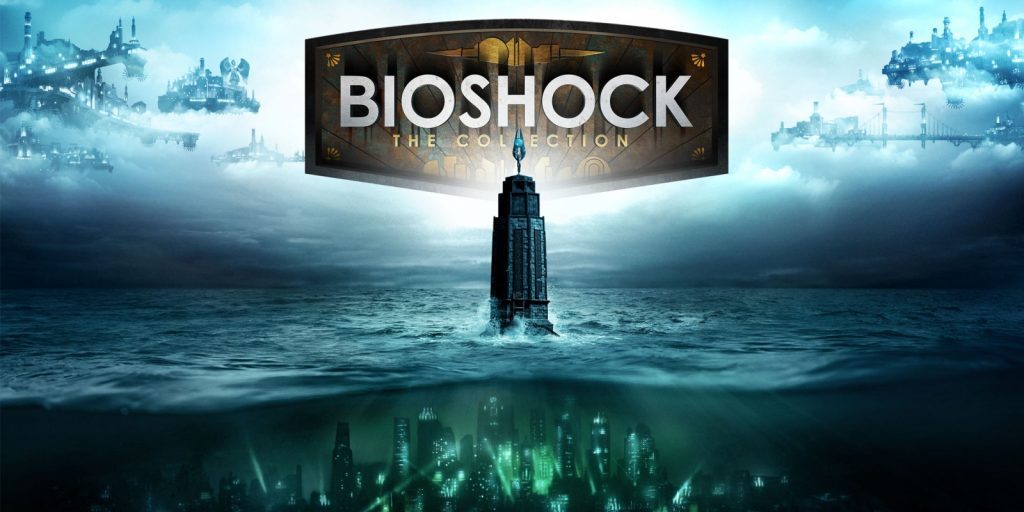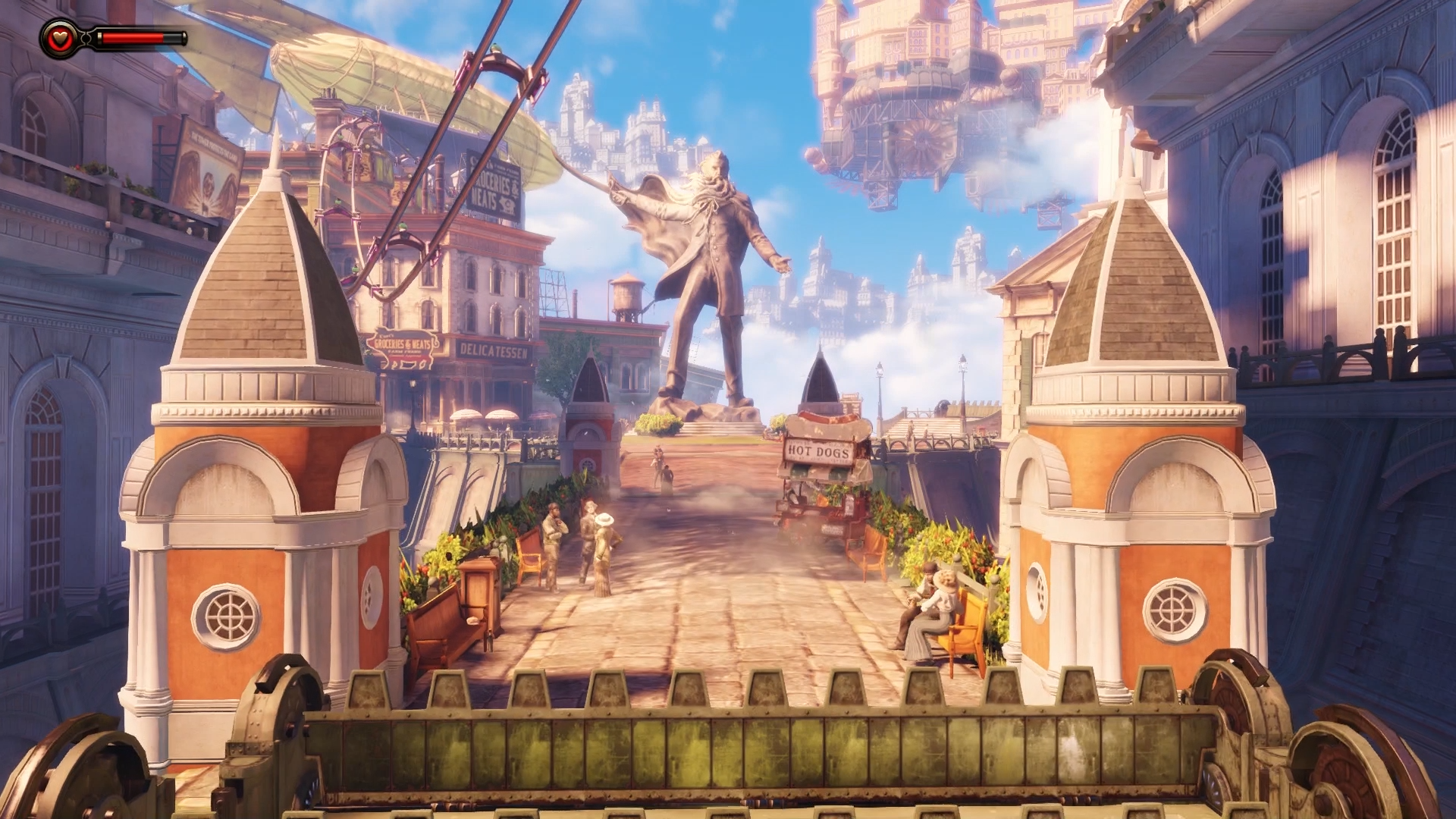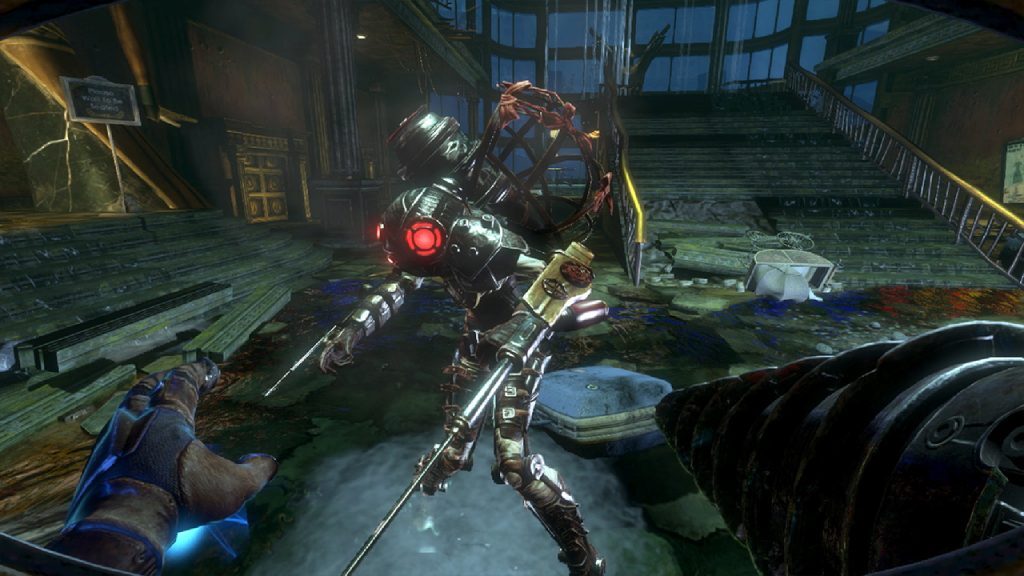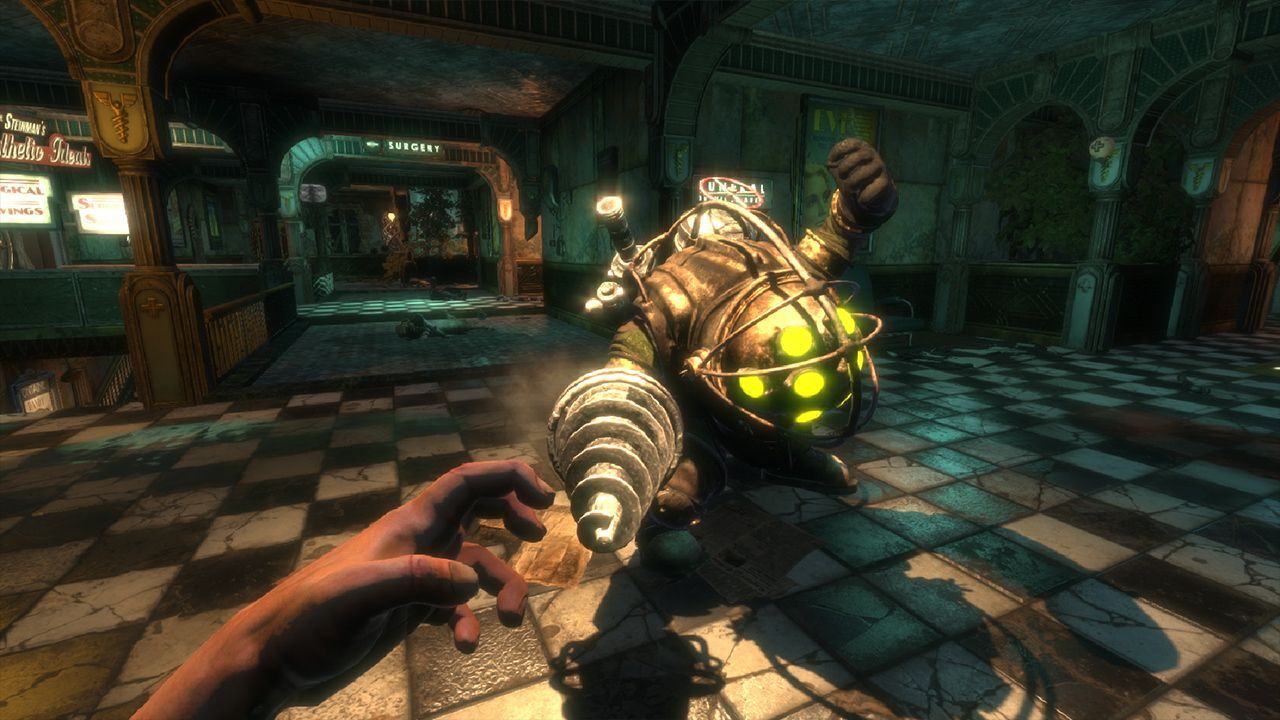The Bioshock Collection on Switch is a handy little port that manages to effectively recapture the magic of the franchise while adding some polish to the more outdated graphics. While it may control a little rough at times, it performs wonderfully on the Switch.
-
Graphics
-
Controls
-
Narrative
-
Gameplay
-
Soundtrack
I was a little late to the party when it came to playing Bioshock. See, I was only twelve when the first game dropped in 2007 and my folks weren’t all that stoked on my pre-teen brain seeing horrific images of men in large diving suits drilling holes into the chest of genetically addled drug-addicts. Having said that, when I did eventually get around to playing the first game, alongside Bioshock 2 and Bioshock Infinite when that eventually released, the hype surrounding the series was very clearly understandable. But all three of those games released a long time ago, as much as it probably hurts to hear for all you folks in your early 30s to hear, so not only does the Switch port of The Bioshock Collection have to stand up to test of time but it must also contend with the diminished power of the hybrid system it’s running on. Yet despite all those roadblocks, it proves to be one of the better mainstream Switch ports on the market.
The seaweed is always greener
Look, if you’re coming into this review expecting a deep dive into the mechanics and narrative of the Bioshock games, you’ll be sorely disappointed. It’s been over a decade since the original game was released and there’s no drought of video essays, think pieces and even academic papers of how the game masterfully subverts mechanical expectations with that of the haunting story of Rapture. A fallen, underwater city driven to ruin by the philosophy of hardcore objectivism peddled by the city’s leader, Andrew Ryan. It still has some of the best writing you can hope to find in a video game to this day and if you haven’t already experienced it, then it’s high time you got on that.
And the Switch would be an utterly fine place to do so. Being the oldest of the bunch, Bioshock places the least amount of strain on the Switch running at a stable 30fps without ever dropping, even when the chaos begins to rise to a level when a few stutters would be more than expected. The water and lighting systems still look fantastic, as well they should given that the Switch port features more than a few similarities to the remastered collection released a few years ago.
The same can be said for Bioshock 2 and Infinite. While maybe not being as dramatically game changing as the first game, both still hold up as solid experiences. Bioshock 2 enhances everything mechanical about the first game while never quiet reaching the peaks of the first game’s story and Bioshock Infinite still remains a game I’m very unsure of. The best way to describe it would be as a great shooter but a bad Bioshock game, ditching the more immersive-simulator elements of its predecessors for more action-focused gunplay. Which is fine, it’s still a fun game with a brain-bending story yet it’ll always remain divisive for “dumbing down” the gameplay.
The circus of value
The sentiments regarding the games’ performance on the Switch rings true for both sequels, which is more impressive for Bioshock Infinite. Easily the most visually demanding and consistently chaotic in terms of action, Infinite runs smoother than most other ports of massive AAA games. Even though it’s still seven years old, Infinite‘s aesthetic is drop dead gorgeous and an absolute joy to explore, yet the emphasis on faster action isn’t all that great when it comes to the Switch.
While the Switch is an absolute miracle of a console due to how easy it is to flip between a docked console and a handheld device, that doesn’t necessarily make for the most comfortable of controls. It’s not a problem exclusive to the Bioshock games; the Joycon analog controllers just don’t feel flexible enough to accommodate the multitude of directions one needs to cover when in a firefight. While the problem isn’t necessarily as pronounced with the first two games, considering the gunplay was always the least enjoyable aspect of those entries, it really becomes an issue with Infinite, a game that’s more honed in on that aspect of gameplay.
Still, it’s difficult to really discredit the collection for a problem that’s more systemic to the Switch than the actual games. The ports themselves handle well enough, look great either docked or in handheld and still offer that excellent brew of narrative direction, exploration and character-building that made the Bioshock franchise a household name. As with most Switch ports, it’s obviously not the best way to play these games but if you feel like diving into Rapture from the comforts of your own bed or you somehow missed out on the games when the first launched and have nothing but a Switch, this collection will serve you just fine.
Follow the Lighthouse
You don’t need me to tell you that the Bioshock games are good, odds are you’ve probably either already seen that for yourself or you’ve had someone gush about them for just a minute too long. What I’m here to tell you is that the ports developed by Virtuos of Irrational Games’ excellent first-person shooter stand-up remarkably well by themselves, proving once again that the Switch is a console that’s greater than the sum of it’s parts. Looking good, running fantastically and handling just a little wonky, The Bioshock Collection on the Nintendo Switch is an excellent port of an amazing franchise.






